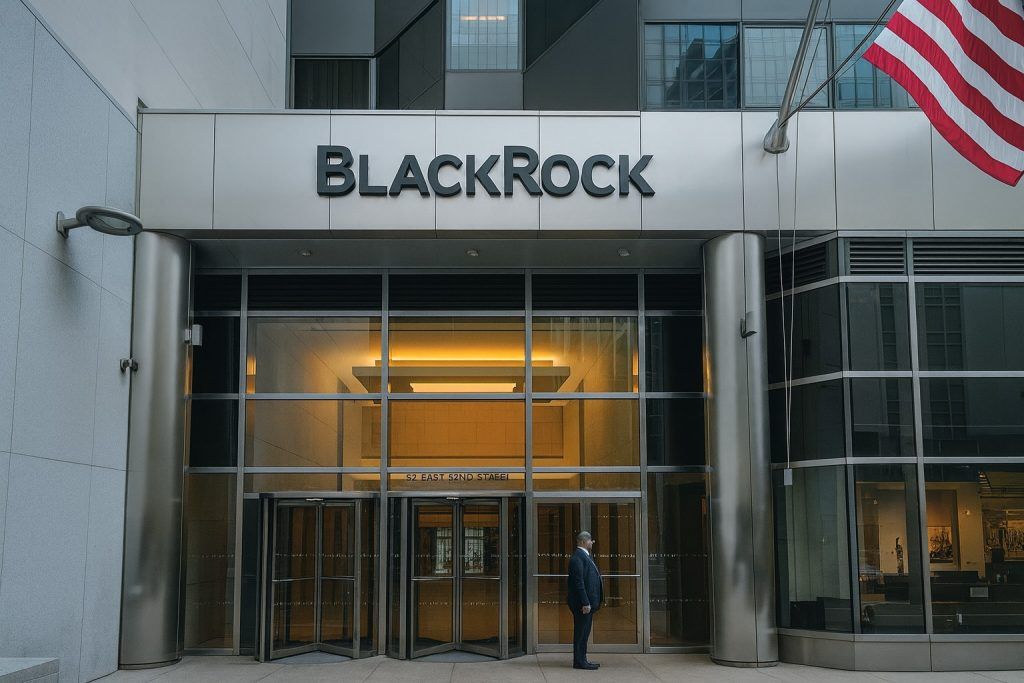- Orthopedics Spin-Off: Johnson & Johnson will separate its orthopedics business into a standalone company named DePuy Synthes over the next 18–24 months [1]. This marks J&J’s second major spinoff since 2023 (after its consumer unit, now Kenvue) [2]. The orthopedics arm (hips, knees, shoulders, surgical tools) generated about $9.2 billion in 2024 (≈10% of J&J revenue) [3]. CFO Joe Wolk explained that while the unit is profitable, “the next phase of innovation in orthopedics was beyond our scope and probably in better hands somewhere else” [4].
- Strong Quarterly Results: In Q3 2025 J&J beat expectations and raised its full-year sales outlook. The company now guides to $93.5–$93.9 billion in product revenue for 2025 (about $300 million higher than prior forecast) [5], surpassing analysts’ consensus. Adjusted EPS came in at $2.80 (vs. $2.76 expected) [6]. Key drug products like Darzalex (blood cancer) and Stelara (immunology) showed robust growth [7]. CEO Joaquin Duato said J&J is “in a new era of accelerated growth,” focusing on six priority areas: Oncology, Immunology, Neuroscience, Cardiovascular, Surgery and Vision” [8] – a strategy that aligns with its pivot away from lower-growth lines.
- Stock Market Reaction: J&J shares jumped roughly 2% in early trading on Oct. 14, 2025 [9] (closing near $191 [10]). The rally reflects confidence that the spinoff and refocused strategy will enhance long-term value. (By comparison, Kenvue – J&J’s spun-off consumer-products firm – has struggled lately on unrelated Tylenol-autism litigation, trading around $16 per share.) [11]
- Investor & Analyst Views: Experts note the split allows J&J to concentrate on higher-margin, faster-growing segments. Seeking Alpha analysts observe the move “aims to focus J&J on higher-growth, higher-margin markets, potentially improving agility and making J&J a more pharma-focused investment, which could boost investor value” [12]. Market consensus rates J&J around a Moderate Buy, citing its strong pipeline and refocused portfolio [13] [14].
- Future Outlook: The new DePuy Synthes company should benefit from any renewed focus and investment on orthopedics innovation. Meanwhile J&J will double down on areas like oncology, immunology and high-tech devices. Notably, J&J is already expanding in surgical robotics (its Ottava multi-port robot, Monarch system, etc. – see TS2.tech coverage) and is “poised to become a major player in next-gen surgical robotics” [15] [16]. Analysts expect this leaner J&J to maintain its growth trajectory, supported by blockbuster drugs and medtech, while unlocking value through the spin-off.
Background: J&J’s Three-Way Split Strategy
Johnson & Johnson, a healthcare conglomerate, historically consisted of consumer health, pharmaceutical (Innovative Medicine), and medical technology divisions. In 2023 J&J spun off its consumer products (Tylenol, Band-Aid, Neutrogena, etc.) into a new public company, Kenvue (KVUE). Now it is moving a second business out: the orthopedics arm of its MedTech division. The spin-off means J&J will remain focused on pharmaceuticals and higher-growth medical devices, while DePuy Synthes (named after J&J’s long-time orthopedics brand) inherits the hip/knee/shoulder implant and surgical tools business [17] [18]. Spin-offs are commonly used to allow each entity to pursue tailored strategies; for J&J this means the legacy orthopedics line can seek dedicated investors and potentially invest more aggressively in its own R&D, while J&J can reallocate capital to areas like biotech drugs and cutting-edge devices.
Q3 Results & Guidance: Beat and Raise
On Oct. 14, 2025 J&J reported Q3 earnings well above expectations, which underpinned its optimistic guidance. Total product sales were $23.99 billion, up 6.8% year-over-year [19]. Pharma sales were $15.56 billion (+6.8%), led by strong oncology and immunology products (e.g. Darzalex at $3.67 billion) [20]. MedTech sales rose 6.8% to $8.43 billion, driven by cardiac care and electrophysiology [21]. Adjusted EPS came in at $2.80, exceeding the $2.76 analysts expected [22].
Based on this performance, J&J raised its 2025 sales outlook. It now expects $93.5–$93.9 billion in product revenue, roughly $300 million above its prior range [23] [24]. (Reported sales guidance was set to ~$93.7 billion [25].) This full-year upgrade reflects better-than-expected trends and was slightly above the ~$93.4B consensus. Notably, the company reaffirmed its EPS guidance at around $10.85 (midpoint) [26], signaling confidence that it can absorb higher tax costs without cutting earnings targets.
CEO Joaquin Duato emphasized J&J’s focused strategy: “With a sharpened focus on the six priority areas of Oncology, Immunology, Neuroscience, Cardiovascular, Surgery and Vision, Johnson & Johnson is in a new era of accelerated growth and innovation” [27]. This mirrors the sectors the company plans to emphasize post-spinoff. CFO Joe Wolk added that separating orthopedics will allow J&J to concentrate resources on high-growth, high-margin franchises. As Reuters reported, Wolk said J&J would explore multiple separation paths (likely a tax-free spin-off), and that by carving out the unit J&J could “focus on high-growth, high-margin areas” [28].
Orthopedics Spin-Off Details
The planned orthopedics spin-off has been named DePuy Synthes (the brand J&J used for its surgical implants business) [29]. The transition is expected to complete in about 1.5–2 years. The orthopedics business itself is solidly profitable but has been undergoing restructuring; J&J started a two-year program in 2023 to streamline it, including exiting certain markets [30]. With ~$9.2 billion in sales (2024) and a portfolio of hip, knee, shoulder implants and related tools, DePuy Synthes will stand among global orthopedics leaders (Stryker, Zimmer Biomet, Smith+Nephew, etc.). Analysts and investors will watch how the new company is capitalized and managed – spinoffs often adjust debt/equity – and how it competes independently.
One rationale for the spin-off, as Wolk hinted, is that innovation cycles in orthopedics (including robotics, biomaterials, etc.) might require a dedicated focus. Indeed, J&J has been active in surgical robotics (the Ottava and Monarch platforms) and other medtech. Industry analysis notes J&J “is investing heavily in surgical robotics” and is “poised to become a major player in next-gen surgical robotics” [31]. Furthermore, J&J is now a listed rival to Intuitive Surgical’s da Vinci, alongside firms like Stryker and Medtronic [32]. Separating out orthopedics could help both J&J and DePuy Synthes double down on appropriate innovation strategies.
Market Reaction & Stock Data
Investors reacted positively. J&J stock (NYSE: JNJ) closed around $191 on Oct. 14, 2025 [33], about 2% above its pre-announcement level [34]. (For reference, JNJ’s 52-week range is roughly $140–192 [35].) Analysts noted that while a spinoff reduces J&J’s revenue base (~10%), it sharpens the parent’s focus on faster-growing areas, potentially justifying a higher valuation multiple. Seeking Alpha noted that many analysts “are optimistic, noting exceeding revenue and earnings” and expecting continued rally on operational focus [36].
By contrast, Kenvue (NYSE: KVUE) – J&J’s existing consumer spin-off – remains under pressure from legal issues (e.g. the recent Tylenol litigation spotlight) [37]. Kenvue trades near $16–17 (market cap ≈$30B) [38] [39], well below its ~$25 range in 2024. Some analysts think Kenvue may have to divest weaker brands due to these challenges [40]. Meanwhile, J&J itself is hitting new highs, with a market cap around $460B [41]. As of Oct. 14, JNJ was trading at $190.90 [42].
Expert Commentary & Analysis
Healthcare analysts point out that spin-offs often unlock shareholder value by letting each business pursue tailored strategies. For example, Seeking Alpha’s news editor notes the orthopedics split will likely “make J&J a more pharma-focused investment,” since orthopedics will no longer dilute growth metrics [43]. Others highlight J&J’s pipeline and products: the company’s strong performance was driven by blockbuster drugs and robust MedTech products, including Stelara, Darzalex, Carvykti, etc. [44] [45]. In fact, Stelara (for autoimmune disease) and Carvykti (the new multiple myeloma CAR-T therapy) are among key growth drivers that should benefit from added R&D emphasis.
On the manufacturing side, J&J’s strategic focus (Oncology, Immunology, etc.) dovetails with current medical trends. Industry experts note that in surgical robotics – a field related to orthopedics and surgery – competition is heating up. TS2.tech reports that in 2025 Intuitive Surgical’s da Vinci will face growing competition from “MedTech rivals (Stryker, Medtronic, Johnson & Johnson)” [46]. J&J’s own robotics ventures (Ottava, Monarch) are part of that landscape [47]. Separating DePuy Synthes may help J&J distinguish these tech bets from its traditional implant business.
On forecasts, J&J’s raised guidance signals confidence. With adjusted EPS guidance reaffirmed at ~$10.85 [48], analysts expect J&J to deliver solid earnings growth (5–7% sales growth, mid-single-digit EPS growth). The spin-off itself will not affect 2025 results (the business will still count in guidance until separation). Over 2026–27, analysts will watch whether DePuy Synthes garners a premium for orthopedics growth (or creates extra costs as a standalone), and whether J&J’s core business continues to accelerate.
Stock Forecast and Next Steps
Following the announcement, many analysts reiterated Buy or Hold ratings on JNJ with modestly higher price targets, citing both the fundamentals and the “cleaner” business profile. For example, some equity analysts project continued share gains as growth in immunology and oncology offsets the smaller base. J&J’s balance sheet remains strong, which should support any tax-free distribution of spinoff shares. Historically, similar corporate restructurings (e.g. AbbVie spinning off Allergan) have eventually led to higher valuations for both entities if well-managed.
In summary, investors and observers see this move as largely positive: it turns a slower-growth division into its own company (with potential for dedicated management and capital) and lets J&J reallocate resources to its fastest-growing franchises. As one market analyst put it, J&J is streamlining itself “to focus on higher-growth, higher-margin markets, potentially improving agility” [49]. For shareholders, the key questions ahead are how DePuy Synthes performs independently and how well J&J executes on its growth mandates.
Sources: Company filings and press releases [50] [51]; Reuters, CNBC and Yahoo News coverage [52] [53]; Seeking Alpha and Market analysis [54] [55]; TS2.tech robotics reports [56] [57]; and industry reports on Kenvue litigation [58]. Stock data from Reuters (as of Oct. 14, 2025) [59].
References
1. www.reuters.com, 2. www.reuters.com, 3. www.reuters.com, 4. www.reuters.com, 5. www.reuters.com, 6. www.reuters.com, 7. www.reuters.com, 8. www.jnj.com, 9. www.reuters.com, 10. www.reuters.com, 11. www.reuters.com, 12. seekingalpha.com, 13. seekingalpha.com, 14. www.reuters.com, 15. ts2.tech, 16. ts2.tech, 17. www.reuters.com, 18. www.jnj.com, 19. www.reuters.com, 20. www.reuters.com, 21. www.reuters.com, 22. www.reuters.com, 23. www.reuters.com, 24. www.jnj.com, 25. www.jnj.com, 26. www.jnj.com, 27. www.jnj.com, 28. www.reuters.com, 29. www.reuters.com, 30. www.reuters.com, 31. ts2.tech, 32. ts2.tech, 33. www.reuters.com, 34. www.reuters.com, 35. www.reuters.com, 36. seekingalpha.com, 37. www.reuters.com, 38. www.reuters.com, 39. www.marketbeat.com, 40. www.reuters.com, 41. www.marketscreener.com, 42. www.reuters.com, 43. seekingalpha.com, 44. seekingalpha.com, 45. www.reuters.com, 46. ts2.tech, 47. ts2.tech, 48. www.jnj.com, 49. seekingalpha.com, 50. www.jnj.com, 51. www.reuters.com, 52. www.reuters.com, 53. www.reuters.com, 54. seekingalpha.com, 55. seekingalpha.com, 56. ts2.tech, 57. ts2.tech, 58. www.reuters.com, 59. www.reuters.com










